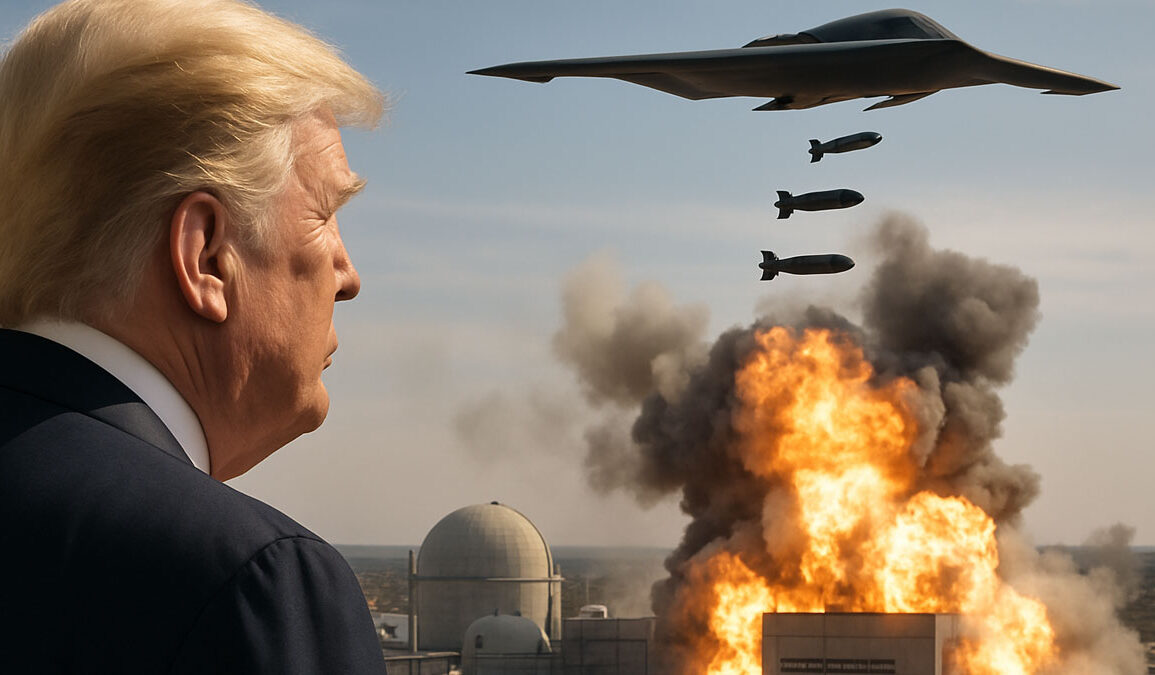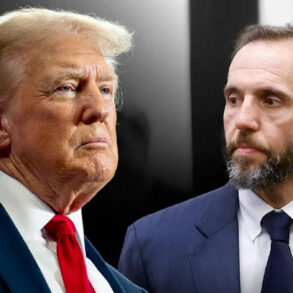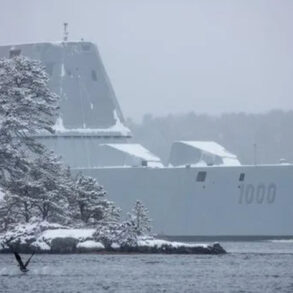A Historic First Strike
In a stunning escalation of Middle East tensions, President Donald Trump announced Saturday night that the United States has conducted direct airstrikes on three of Iran’s most critical nuclear facilities: Fordow, Natanz, and Isfahan. The announcement marks the first time since the 1979 Iranian Revolution that the U.S. Air Force has bombed major nuclear sites inside Iran—an act that many view as a declaration of war.
The strikes come as the latest and most dramatic turn in the deepening conflict between Israel and Iran, and they bring the U.S. military firmly into the fight. Trump confirmed the attack on his Truth Social account, declaring:
“We have completed our very successful attack on the three Nuclear sites in Iran, including Fordow, Natanz, and Esfahan. All planes are now outside of Iran air space. A full payload of BOMBS was dropped on the primary site, Fordow. All planes are safely on their way home. Congratulations to our great American Warriors. There is not another military in the World that could have done this. NOW IS THE TIME FOR PEACE!”
The Targets: Fordow, Natanz, and Isfahan
Each of the three facilities targeted holds immense strategic value in Iran’s nuclear program.
Fordow Fuel Enrichment Plant
Located near the city of Qom and hidden deep within a mountain, Fordow is Iran’s most fortified enrichment site. Discovered by Western intelligence in 2009 after being built in secret, it has long been viewed as nearly untouchable by conventional military strikes. U.S. officials confirmed that Fordow received the heaviest bombardment, likely involving 30,000-pound “bunker-buster” bombs carried by B-2 stealth bombers.
Natanz Nuclear Facility
Known officially as the Shahid Ahmadi Roshan site, Natanz is Iran’s main uranium enrichment center and one of the most internationally scrutinized facilities. Although Israel had previously hit this site with smaller munitions, the U.S. strike appears to have targeted it more comprehensively. Natanz has been central to Iran’s efforts to enrich uranium to weapons-grade levels.
Isfahan Nuclear Technology Center (INTC)
Isfahan is Iran’s largest nuclear research hub. It houses multiple reactors, a conversion facility, and labs capable of supporting a weapons program. The site has already been under U.S. and UN sanctions and was partially damaged by Israeli strikes earlier this month. Its destruction could severely hamper Iran’s technical ability to produce weapon-grade nuclear fuel.
What Led to This Moment
The lead-up to the strike was tense and secretive. Just days ago, Trump declared he would decide “within two weeks” whether to act, offering Iran one final window for negotiation. Behind the scenes, however, preparations for military action were already underway. B-2 bombers were tracked heading west from Missouri, sparking speculation that an attack was imminent.
Trump’s team had considered a last-ditch diplomatic effort. Turkish President Recep Tayyip Erdoğan attempted to broker talks in Istanbul, with Trump even signaling a willingness to attend in person. But the outreach failed when Iran’s Supreme Leader Ali Khamenei, believed to be in hiding, could not be reached to authorize participation.
Meanwhile, the pressure on Trump was mounting. His anti-interventionist base was divided, with some demanding complete non-involvement and others urging limited military action if it meant halting Iran’s nuclear ambitions. Trump himself had long stated that Iran must never be allowed to develop nuclear weapons, a red line that appears to have finally triggered direct action.
A Calculated Gamble
Administration officials describe the strike as a preemptive move designed to “set back Iran’s nuclear program by years.” Inspectors recently observed near-bomb-grade uranium at Isfahan, and intelligence sources warned of a potential final push toward weaponization. Trump made no attempt to justify the strike beyond asserting that “now is the time for peace,” suggesting he views the show of force as a deterrent rather than the start of a prolonged war.
Still, the risk of retaliation looms. Iran may now target U.S. troops and installations across the Middle East. The Pentagon has already placed bases in Iraq, Syria, and the Gulf on high alert.
A Defining Moment
For decades, U.S. presidents have avoided direct conflict with Iran, pursuing sanctions, covert actions, and diplomacy. Trump’s strike breaks that precedent, plunging America into a direct military confrontation. Whether this bold move prevents nuclear war—or ignites one—remains to be seen. But one thing is clear: the era of strategic ambiguity on Iran’s nuclear program is over.








